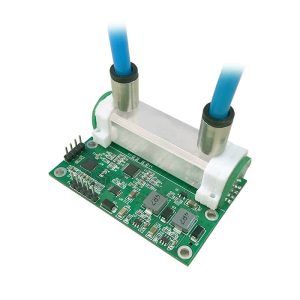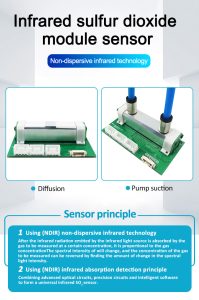Gas sensors are indispensable devices used in a wide range of industrial applications to detect and monitor the presence of gases. These sensors play a crucial role in ensuring worker safety, preventing accidents, and maintaining environmental compliance within industrial settings. This article aims to explore the various applications of gas sensors in industrial environments and highlight their significance in optimizing operations and safeguarding personnel.

Hazardous Gas Detection
One of the primary applications of gas sensors in industrial settings is the detection of hazardous gases. In industries such as oil and gas, chemicals, and manufacturing, workers may be exposed to toxic or flammable gases like hydrogen sulfide, carbon monoxide, ammonia, or methane. Gas sensors installed in work areas can continuously monitor for the presence of these gases, issuing alerts or triggering alarms when concentrations exceed safe levels. This early warning system allows workers to take immediate action, evacuate if necessary, and prevent potential accidents or health hazards.
Indoor Air Quality Monitoring
Indoor air quality is crucial for the well-being and productivity of workers in industrial facilities. Poor air quality can result from factors such as inadequate ventilation, chemical emissions, or the release of volatile organic compounds (VOCs) from manufacturing processes. Gas sensors can be deployed to monitor indoor air quality parameters like carbon dioxide levels, VOC concentrations, or particulate matter. By identifying potential sources of pollution or inadequate ventilation, facility managers can take appropriate measures to improve air quality, providing a healthier and more comfortable working environment for employees.
Combustible Gas Leak Detection
In environments where combustible gases are present, such as refineries, chemical plants, or storage facilities, gas sensors play a critical role in detecting gas leaks. Combustible gas sensors are specifically designed to detect lower explosive limits (LEL) of gases like methane or propane. Installation of these sensors helps identify potential leakage points, enabling quick detection and mitigation of gas leaks before they can lead to explosions or fires. Early detection allows personnel to respond promptly, shut down equipment if necessary, and prevent catastrophic incidents.
Industrial Emission Monitoring
Industrial processes often release gases into the atmosphere, which can have adverse effects on the environment and public health if not properly managed. Gas sensors are employed to continuously monitor emissions from stacks, chimneys, or exhausts, ensuring compliance with environmental regulations. By measuring the concentration of pollutants such as sulfur dioxide, nitrogen oxides, or particulate matter, these sensors help industries control and minimize their environmental impact. Real-time emission data allows companies to optimize their processes, install pollution control devices, or implement corrective actions to reduce air pollution.
Process Control and Optimization
Gas sensors contribute to process control and optimization in industrial settings. By monitoring specific gases relevant to a particular process, such as oxygen levels in combustion processes or moisture content in food manufacturing, gas sensors provide crucial data for process optimization. Continuous monitoring enables operators to maintain optimal operating conditions, improve efficiency, and reduce energy consumption. Additionally, prompt detection of deviations or anomalies through gas sensors allows for immediate intervention and adjustments within the production system, preventing quality issues or production failures.

Leak Detection in Pipelines
Gas sensors are utilized to detect leaks in pipelines transporting gases or liquids in industrial facilities. These sensors can identify leakage points, even in underground or hard-to-reach areas, preventing potential hazards and minimizing product loss. By monitoring gases like hydrogen, which is often added as a tracer gas, gas sensors can accurately locate leakage points along the pipeline network. The ability to quickly identify and repair leaks ensures operational safety, minimizes environmental impact, and reduces financial losses.
In conclusion, gas sensors are invaluable tools that enhance safety, improve operational efficiency, and ensure regulatory compliance in industrial settings. From hazardous gas detection and indoor air quality monitoring to emission control and process optimization, gas sensors play a vital role in safeguarding personnel, preventing accidents, and minimizing environmental impact. As technology advances, we can expect to see further developments in gas sensor capabilities, increasing their effectiveness and expanding their applications across diverse industrial sectors.
 : +86 155 8830 2704
: +86 155 8830 2704 : jxdziot@gmail.com
: jxdziot@gmail.com
